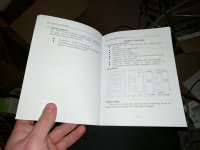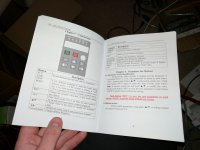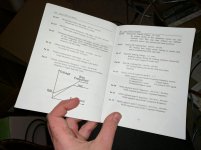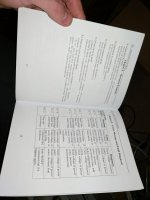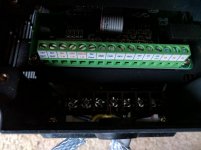Here's an idea, not foolproof but fits with the on-the-cheap approach with these VFDs and has some basis in past practice in other settings. Stove and dryer heating elements are high wattage, low resistance. Low resistance means it'll pull high current from your drive, which is rolling the dice with the drive innards if the heating element is too low a resistance compared to the drive's intended/design brake resistance rating.
The suggestion: Radio transmitter testing requires a "dummy load" which is a resistive element. The improvised way, when lacking the proper and precise high-watt precise resistor is... an incandescent light bulb. It's a shoddy solution that, with the right size lightbulb, works surprisingly well. The light bulb even has a bit of a self-moderating effect because as more power flows through it, the resistance of the filament increases from the heat. If I remember correctly, 120 volt light bulbs in the 60-75 watt vicinity have a resistance vaguely in the 50 ohm region, which is safely higher resistance enough than the stove/dryer heating elements that you aren't rolling the dice in a big way on drawing too much current through your drive's innards on your first try. If you want to be extra conservative, start off with smaller wattage bulbs to start, being lower wattage they are higher resistance and will not draw as much current from the drive. There is some risk that too small a bulb (which = too high a resistance) will not bleed the voltage off fast enough and your bus capacitors will take the strain of the resulting voltage spike.
String two 120v light bulbs in series to get a 240v resistance load. If the spike of voltage that the drive is trying to dissipate is higher voltage than the regular bus voltage (but I would assume that the drive, in dumping into a resistor, is trying precisely to prevent such an above-bus-voltage spike), string 3 bulbs in series to get a 360v capable load. The series connection of the bulbs also multiplies your wattage-dissipation ability- two 75 watt bulbs in series are capable of dissipating 150 watts, and so on.
The brightness and duration of light from the lightbulbs will give you feedback on whether your bulb size is on or off the mark. A longer glow suggests that the bulbs are undersized and not bleeding the voltage away fast enough. Too big a bulb/ too low a resistance equals a short flash and maybe a burned out lightbulb (which might act as a fuse to limit current out of the drive)(though once the filament expires, but then your bus capacitors may have some un-dissipated voltage to contend with).
If I were going to do this, I would probably start with a series connected pair of 75 watt bulbs, which should give you somewhere in the neighborhood of 100 ohms (which if I recall is in the neighborhood of what some mid-size drives I've looked up expect as a load resistor, although I looked that up some time ago), at somewhere around 150 watts dissipation, and capable of handling 240 volts.
I see that the original poster is in the UK and if I remember correctly your native voltage there is 200 or so so maybe you don't even need to series-connect the bulbs. But you have to do some figuring about the wattage because you've got different voltage and current. If using a 240v bulb I'd probably start at around a 100-150 watt bulb (or a couple of 60-75 watt 240v bulbs in parallel)
This is a total bubblegum & bailing wire approach, but not much more so (and in my opinion, less risk) than the dryer or stove element, and you can't beat the cost of entry of a few lightbulbs and a few cheap lightbulb sockets, and you get the visual feedback from the brightness and duration of the light, so that you can go visit your friendly neighborhood resistance-load-shop (any store that carries lightbulbs) to do some resistor comparison shopping.
YMMV and 100% at your own risk, etc. Don't put the lightbulbs near your face or other valued body parts while under test or in use just in case they do a dramatic flashbulb performance, etc.
PS, trying to measure the resistance of an un-lit lightbulb with an ohm-meter/multimeter is a fairly useless exercise, because the cold unlit resistance is significantly different from the hot /lit resistance. And: though this is stating the wildly obvious to anyone who knows enough about electricity to have any business messing with a VFD, but with the internet you never know who could turn out to be the eventual audience, this only works with old-school inefficient incandescent lightbulbs- compact florescent or LED bulbs will be stunningly unsuited for this use, for the sake of both the VFD and the bulbs, and their inner electronics may behave more like firecrackers.





